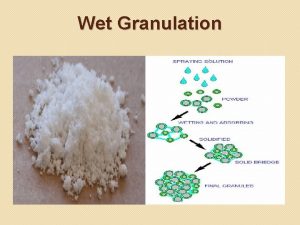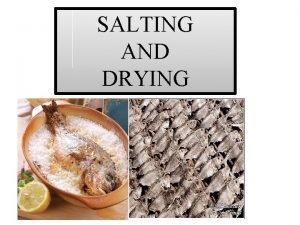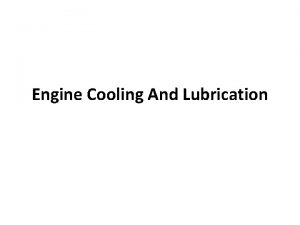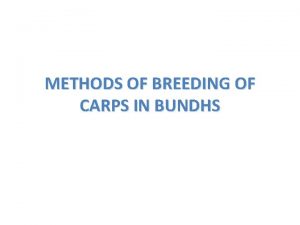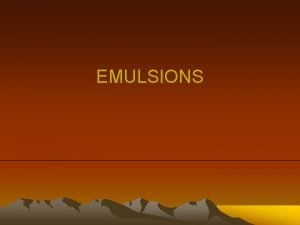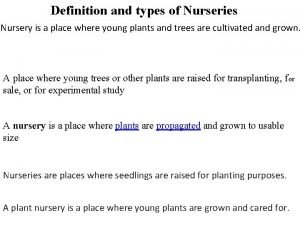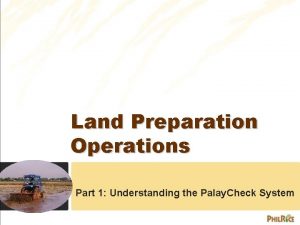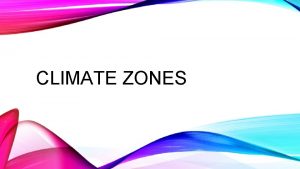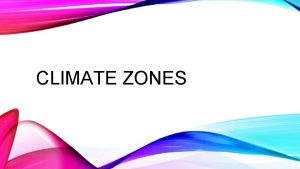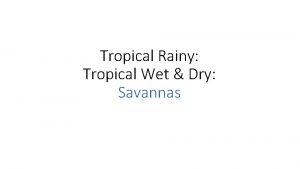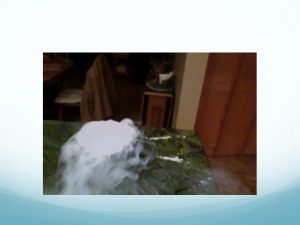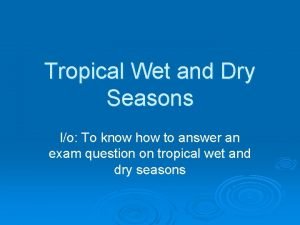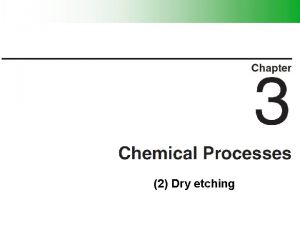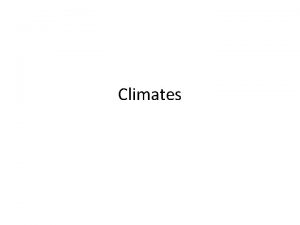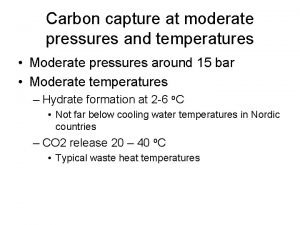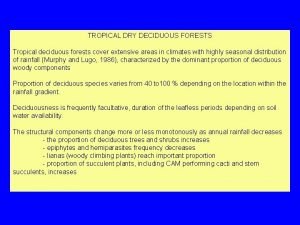2 Tropical wet and dry Dry Semiarid Moderate














- Slides: 14


2 • Tropical wet and dry • Dry • Semi-arid • Moderate • Mediterranean • Humid subtropical • Marine west coast • Continental • Humid continental • subarctic • Polar • Tundra • Ice cap • Highlands

3 TROPICAL WET • Location • found along the equator, usually within 25 degrees of the equator • Brazil, Democratic Republic of the Congo, Indonesia, and the Philippines. • Temperature • same throughout most of the year because these areas are found along the equator and receive constant direct sunlight • average temperature is about 80 degrees • only 1 season • Precipitation • over 100 inches of rain per year, although some receive nearly 300 inches per year. • Vegetation • constant rain and direct sunlight at the equator allow tropical rainforests to develop • Animals • Snakes, frogs, birds, and small mammals, insects

4 TROPICAL WET/DRY • Location • found near the equator, usually on the outer edges of Tropical Wet climate areas • Africa, Brazil, and India • Temperature • During the wet season, temperatures average about 77 degrees. During the dry season, temperatures average about 68 degrees. • 2 seasons: wet season (summer) and dry season (winter). • Precipitation • only falls during the summer months • dry season usually has less than 4 inches of rain • wet season, at least 25 inches will fall • Vegetation • grasses and shrubs with an few scattered trees • Animals • wildebeests, gazelles, zebras, elephants, giraffes • Lions, cheetahs, hyenas, and large birds

5 MEDITERRANEAN • Location • between the 30 o and 45 o degree latitudes • found on the western sides of continents • Temperature • Winter temperatures are usually between 30 and 65 degrees. Summer months all average above 50 degrees. The warmest month averages about 72 degrees. • 2 seasons: summer and winter • Precipitation • Snow can fall in higher elevation areas. • receive around 20 inches of rainfall. • Vegetation • Evergreeens • deciduous • Fruit trees and vines such as grapes, figs, olives, and citrus fruits • small shrubs, grasses, and herbs. • Animals • goats and sheep, Rabbits, jackels, and lynx

6 HUMID SUBTROPICAL • Location • east coast of continents between 20 o and 40 o north and south of the equator • Ex: southeast United States (Florida), Brazil • Temperature • summer the average temperature is between 70 and 80 degrees. • coldest month averages 45 -50 degrees • only 2 seasons here: summer and winter • Precipitation • receive about 48 inches of rain each year • Vegetation • evergreen trees, bushes, and shrubs • Animals • Alligators, deer, panthers, capybara

7 MARINE WEST COAST • Location • located along the west coast of mid-latitude continents • covers more land in Europe • Temperature • 2 seasons: summer and winter. • coldest month rarely averages lower than 30 degrees and the warmest month averages about 72 degrees; mild climate • Precipitation • Some areas of Marine West Coast only get 30 inches of rain while others can receive as much as 98 inches! In some places it rains 150 days out of 365 • Vegetation • evergreen trees (conifers) such as spruce, cedar, pine, redwood, grasses • Animals • variety of birds such as eagles in North America and penguins in New Zealand. Mainly small mammals are found here, except for a few different species of bears in some areas.

8 HUMID CONTINENTAL • Location • interior of continents between the 30 and 60 degrees latitude • Temperature • 4 different seasons • low cold temperatures and high warm temperatures. Summer month temperatures average about 71 degrees and winter months usually average 25 degrees. • Precipitation • Between 20 and 50 inches of rain • Vegetation • Evergreen (confier) forests are found in the north and mixed with deciduous forests (lose leaves) as you move south. Most grasses and shrubs survive here • Animals • bears, wolves, coyotes, deer, and other smaller mammals, thousands of birds

9 SUBARCTIC • Location • found in the interior (not coastal) of high latitude continents usually between 50 and 70 degrees latitude • Northern Hemisphere. • Temperature • 2 seasons • Temperatures can reach -40 degrees in the winter and be as high as 85 degrees in the summer • Precipitation • Between 10 and 20 inches of rain • Vegetation • evergreen trees (conifers) such as pine and spruce are hardly enough to survive the cold • Other ferns, shrubs and grasses can be found during summer months. • Animals • Black and Grizzly Bears, Bald Eagles, wolves, bobcats, and wolverines, Caribou and moose

10 • Location TUNDRA • between the 60 -75 degree latitude lines • long the coast of the Arctic Ocean • Temperature • very harsh winter and a cool summer • Winter months temperatures are usually between -18 and -50 degrees. "Summer" temperatures range from 35 -50 degrees • Precipitation • Between 5 -15 inches of precipitation falls every year • Vegetation • permafrost prevents any trees from growing here. Many different types of mosses, lichens, and algae grow. • Animals • Polar Bears, Musk Ox, Arctic Fox, Snow Owl, reindeer, and lemmings, insects

11 • Location ICE CAP • located near the poles • Temperature • extreme seasons, temperatures almost never go above freezing • 2 seasons. • "warmest" month averages about -16 degrees. The coldest month averages about -70 degrees. • Precipitation • less than 10 inches, technically it is a desert • Vegetation • traditional plants can not grow in this harsh climate. • moss and lichen--lichen is a mixture of a fungus and algae. • Animals • Penguins, Polar Bears, Many other birds such as the Albatross , Seals

12 • Location ARID • 33% of the Earth's land is covered in Arid climate • usually a desert; most deserts are found along the 30 degree latitude line (north and south of the equator) • Temperature • do not have regular seasons; 2 seasons, summer and winter. • reach as high as 130 degrees or as low as negative 30 degrees • Precipitation • receive less than 10 inches of rain per year. However, many areas of arid climate receive far less than that • Vegetation • scrub bushes, grasses, and cactus • Animals • Camels, Foxes and jackals, snakes and scorpions

13 • Location SEMI-ARID • found on the outer edge of Arid climate areas (Sahel in Sub-Saharan Africa, northern United States, northern Australia) • Temperature • seasonal changes depend on the latitude • follow the same temperature patterns as the surrounding area • Precipitation • averages between 10 -20 inches of rain annually • Vegetation • too dry to support forests of trees, but a few scattered trees that require less water can be found here. Mainly grasses and shrubs cover Semiarid land • Animals • wildebeests, zebras, giraffes, gazelle, deer, and bison, coyotes, jackals, hyenas, lions, and wolves

14 HIGHLAND • Location • found in high mountain areas (Mount Kilimanjaro and Plateau of Tibet) • Temperature • no seasons • At the a mountain it might be 80 degrees and sunny, but as you climb the mountain it will get colder and be rainy. As you keep climbing, it might be snowy and freezing cold. The temperature drops about 3 degrees every 1000 feet in elevation as you move up a mountain. • Precipitation • depends on the elevation. • land around the base of a mountain is dry, but snow may cover the top of a mountain • Vegetation • At the base of the mountain the vegetation will be the same as the surrounding climate type • Animals • different types of goats and sheep, Mountain Goats, Mountain Lions and Snow Leopards
 Wet wet wet
Wet wet wet Tropical wet and dry locations
Tropical wet and dry locations Tropical wet climate characteristics
Tropical wet climate characteristics Wet granulation
Wet granulation Theory of drying
Theory of drying Components of water cooling system
Components of water cooling system Difference between wet gum and dry gum method
Difference between wet gum and dry gum method Slugging in industrial pharmacy
Slugging in industrial pharmacy Differentiate between dry corrosion and wet corrosion
Differentiate between dry corrosion and wet corrosion Dry and wet corrosion
Dry and wet corrosion Rowenta pro 1500w wet and dry
Rowenta pro 1500w wet and dry Wet bundh
Wet bundh Nascent soap method
Nascent soap method Nurseries definition
Nurseries definition Use in wet and dry land preparation
Use in wet and dry land preparation



